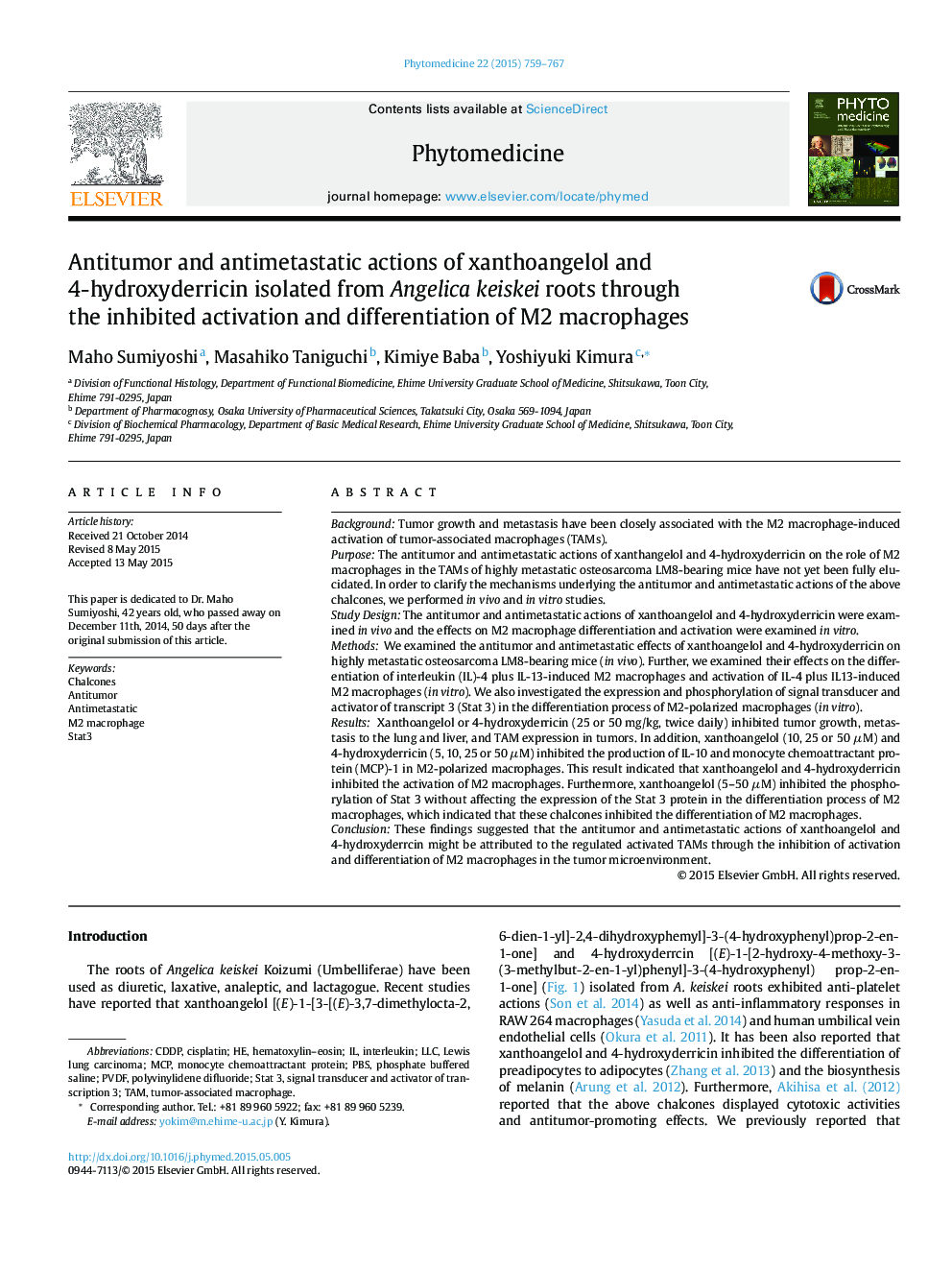| کد مقاله | کد نشریه | سال انتشار | مقاله انگلیسی | نسخه تمام متن |
|---|---|---|---|---|
| 2496354 | 1556696 | 2015 | 9 صفحه PDF | دانلود رایگان |

BackgroundTumor growth and metastasis have been closely associated with the M2 macrophage-induced activation of tumor-associated macrophages (TAMs).PurposeThe antitumor and antimetastatic actions of xanthangelol and 4-hydroxyderricin on the role of M2 macrophages in the TAMs of highly metastatic osteosarcoma LM8-bearing mice have not yet been fully elucidated. In order to clarify the mechanisms underlying the antitumor and antimetastatic actions of the above chalcones, we performed in vivo and in vitro studies.Study DesignThe antitumor and antimetastatic actions of xanthoangelol and 4-hydroxyderricin were examined in vivo and the effects on M2 macrophage differentiation and activation were examined in vitro.MethodsWe examined the antitumor and antimetastatic effects of xanthoangelol and 4-hydroxyderricin on highly metastatic osteosarcoma LM8-bearing mice (in vivo). Further, we examined their effects on the differentiation of interleukin (IL)-4 plus IL-13-induced M2 macrophages and activation of IL-4 plus IL13-induced M2 macrophages (in vitro). We also investigated the expression and phosphorylation of signal transducer and activator of transcript 3 (Stat 3) in the differentiation process of M2-polarized macrophages (in vitro).ResultsXanthoangelol or 4-hydroxyderricin (25 or 50 mg/kg, twice daily) inhibited tumor growth, metastasis to the lung and liver, and TAM expression in tumors. In addition, xanthoangelol (10, 25 or 50 μM) and 4-hydroxyderricin (5, 10, 25 or 50 μM) inhibited the production of IL-10 and monocyte chemoattractant protein (MCP)-1 in M2-polarized macrophages. This result indicated that xanthoangelol and 4-hydroxyderricin inhibited the activation of M2 macrophages. Furthermore, xanthoangelol (5–50 μM) inhibited the phosphorylation of Stat 3 without affecting the expression of the Stat 3 protein in the differentiation process of M2 macrophages, which indicated that these chalcones inhibited the differentiation of M2 macrophages.ConclusionThese findings suggested that the antitumor and antimetastatic actions of xanthoangelol and 4-hydroxyderrcin might be attributed to the regulated activated TAMs through the inhibition of activation and differentiation of M2 macrophages in the tumor microenvironment.
Figure optionsDownload high-quality image (124 K)Download as PowerPoint slide
Journal: Phytomedicine - Volume 22, Issues 7–8, 15 July 2015, Pages 759–767